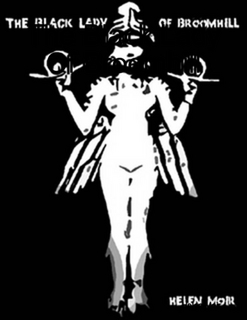Book #56
The Black Lady of Broomhill by Helen Moir
The Black Lady of Broomhill is an account by local author and historian Helen Moir concerning the urban myth and factual story surrounding a local ghost story from Larkhall in South Lanarkshire, Scotland.
The stories of The Black Lady have haunted me since I was a child. Back then, the only information I had was that you would die immediately upon locking eyes with her, that she roamed around the pub near my house, and that she was mercilessly killed a long time ago. That was enough information to keep me from straying too far from home, especially at night.
As I got older, morbid curiosity seemed to overtake the fear, and articles online gave me some more clues to who The Black Lady was. Everything has been pieced together, rumour and speculation, until this factual account by Helen Moir ended up in the aforementioned pub. I had to buy it.
The Black Lady was a real woman, brought to Scotland by Captain McNeil-Hamilton. She was brown-skinned, unused to the Scottish climate and customs, and (I imagine) completely out of her depth. She lived in the Captain’s household, until one day the locals noticed her disappearance. Claiming she had gone home, despite damning evidence otherwise, the Captain continued with his life and ultimately died at a young age. It’s highly likely we will never know exactly what happened to her, but it seems she haunts the Broomhill estate to this day. In this account, Moir names her as Sita Phurdeen, giving real humanity to the spectre of myth all Lanarkshire locals tell stories about.
Moir’s interest in the lady’s origins greatly surpasses my own, and it’s astonishing to contemplate the level of research she’s undertaken to put this booklet together. It’s filled with gorgeous factual accounts and pictures of the Broomhill house and their customs. Not only that, Moir has a close connection with the house and family who lived there, as members of her family worked for the household at the time Sita Phurdeen was resident. Recounting a series of recurring dreams she has over the course of many years, she speculates and surmises on the Black Lady’s fate. Most disturbingly of all, she compares a room she sees in her dreams with an old servant’s account, and it’s scarily familiar. Add in some ghostly sightings of the lady, and this makes for very curious reading.
Although my curiosity will never be fulfilled on this score until I learn the full story - one, I’m sure, which will never surface, this is a delightful and chilling collection of facts on Larkhall, the lady herself, and the man who brought her here. Whether he is to be vilified or not remains to be seen, however I have never thought of him as anything other than a villain.

